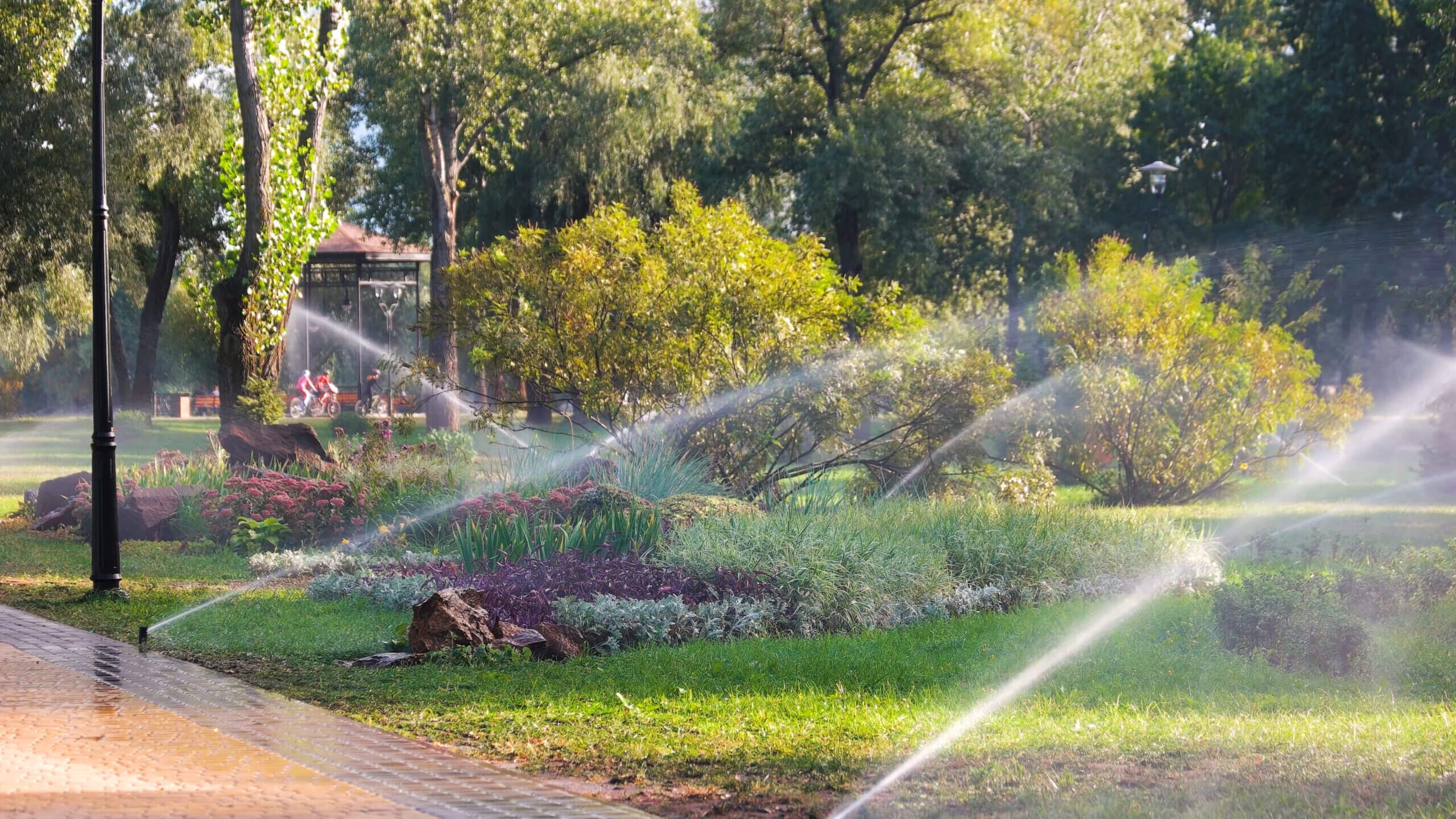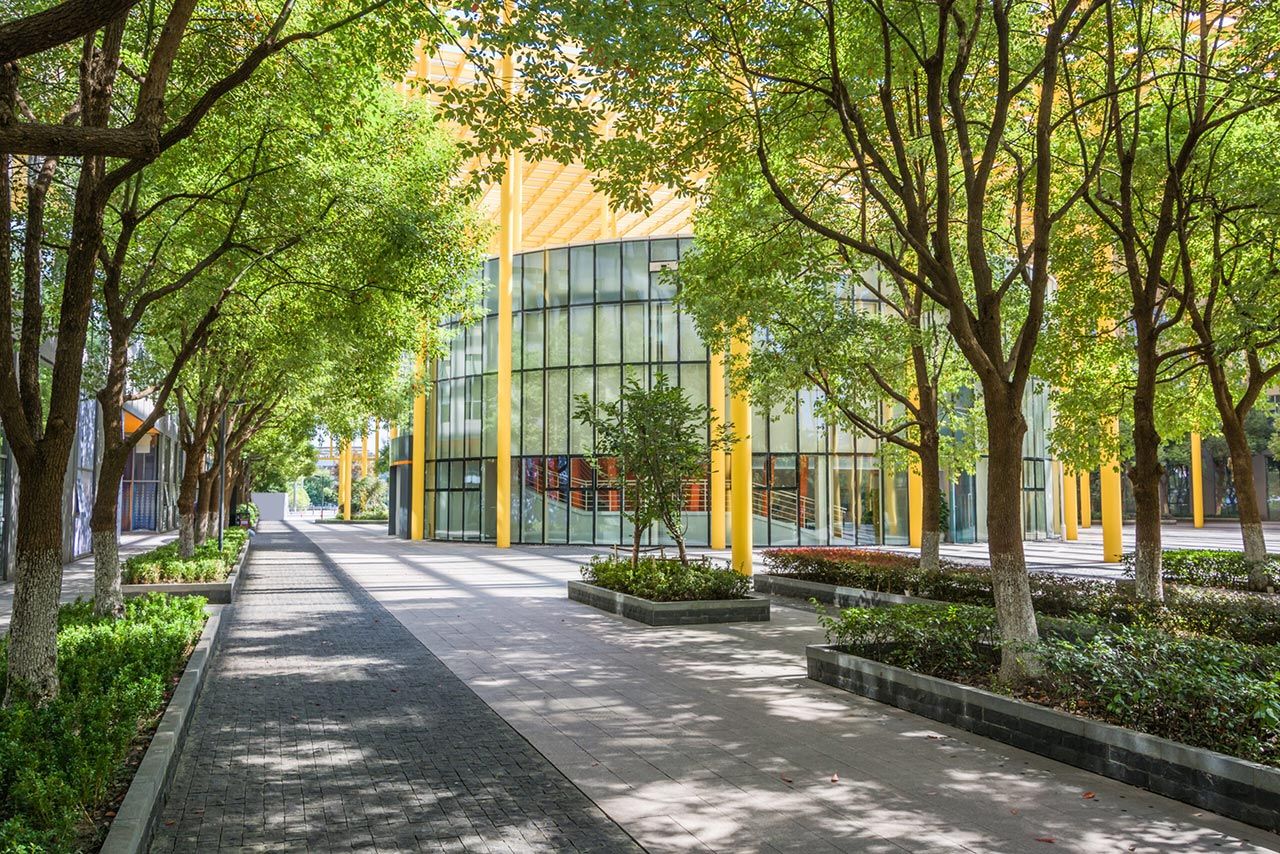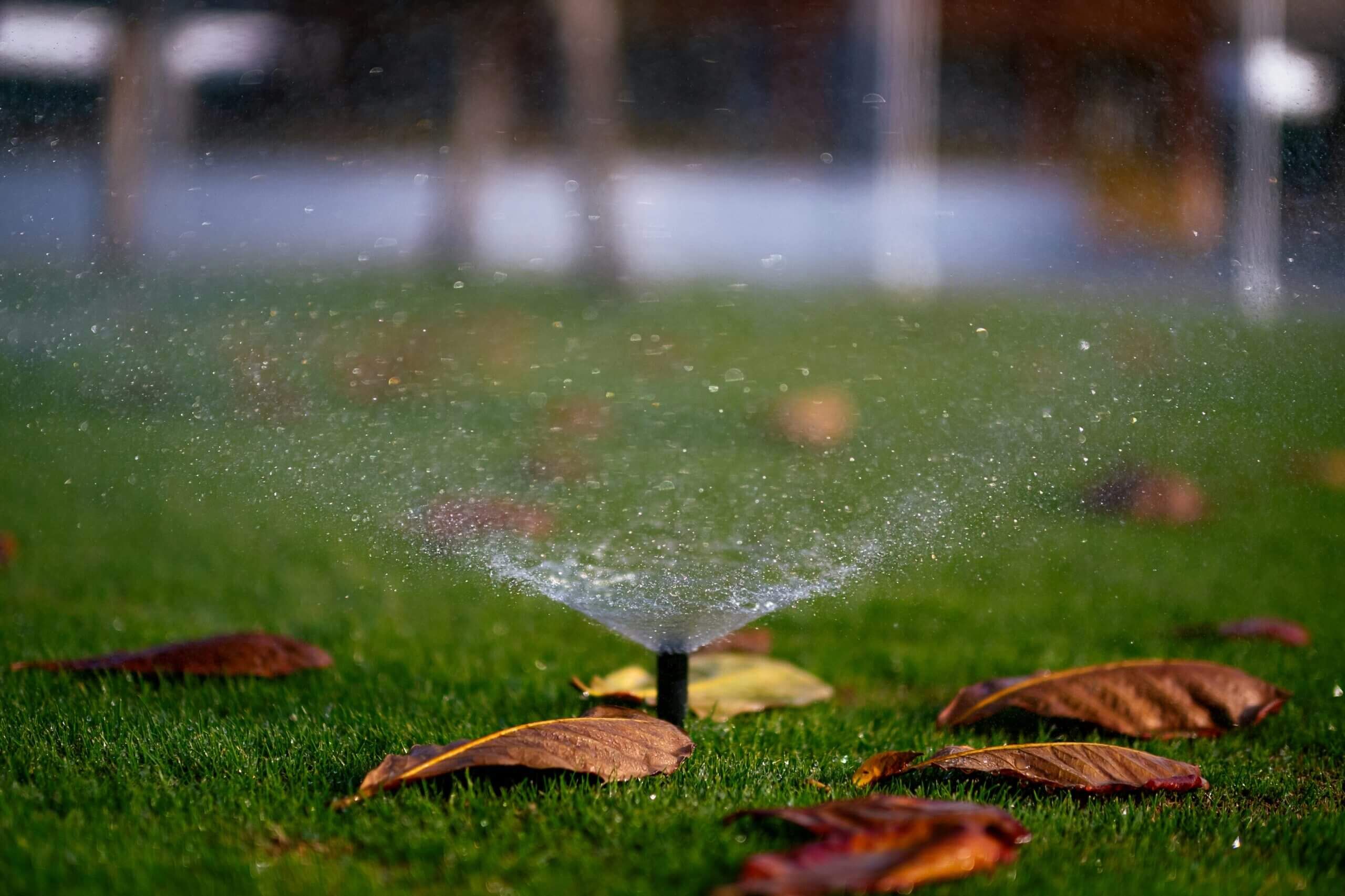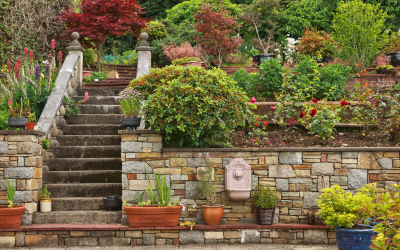Why is a Retaining Wall Essential for Your Landscape?
Retaining walls are critical components in both residential and commercial landscaping. These structures not only look good but also play a vital role in landscape design. They help manage soil, prevent erosion, and create usable areas on sloped or uneven land.
Adding retaining walls to your yard design can improve your outdoor spaces. It also makes your property more stable and sustainable. This article discusses the benefits of retaining walls, their role in landscaping, and their importance for property owners.
Understanding the Basics: What is a Retaining Wall?
The Indispensable Role of Retaining Walls in Landscaping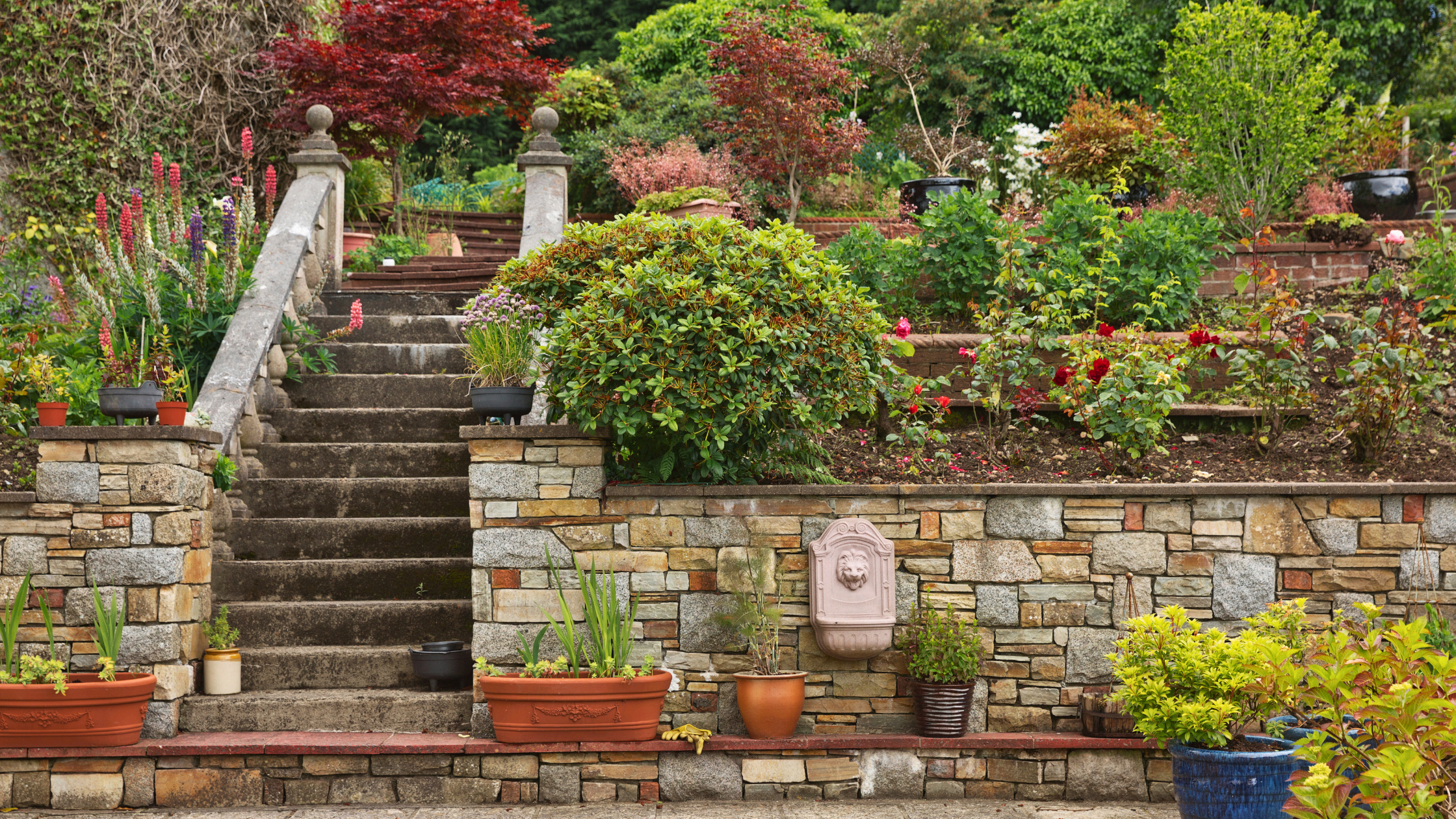
A retaining wall is a structure designed to hold soil in place, particularly on sloped land where soil might otherwise move due to gravity. These walls help stop soil erosion, control water flow, and create usable areas on steep land.
Retaining walls can be made from various materials, including concrete blocks, natural stone, interlocking concrete blocks, and poured concrete. Each material offers unique benefits in terms of durability, aesthetic appeal, and structural support. When constructed properly, a retaining wall serves to transform unusable terrain into valuable, functional space.
Why is a Retaining Wall Essential for Your Property?
Retaining walls are essential for stabilizing slopes and preventing soil erosion. Slope stabilization is a critical function of retaining walls, ensuring the safety and integrity of your property. They act as barriers, holding soil in place and preventing it from washing away during heavy rains. A stone retaining wall can enhance the visual appeal of outdoor spaces, contributing to curb appeal and creating unique garden areas. This erosion control is especially important in sloped areas where soil movement can cause significant damage.
Retaining walls make flat areas on steep slopes for gardens, patios, or extra space. Retaining walls have a dual function. They serve a purpose and also enhance the look of your property. This can add value to your property and improve its appearance
Preventing Soil Erosion with Retaining Walls
The Indispensable Role of Retaining Walls in Landscaping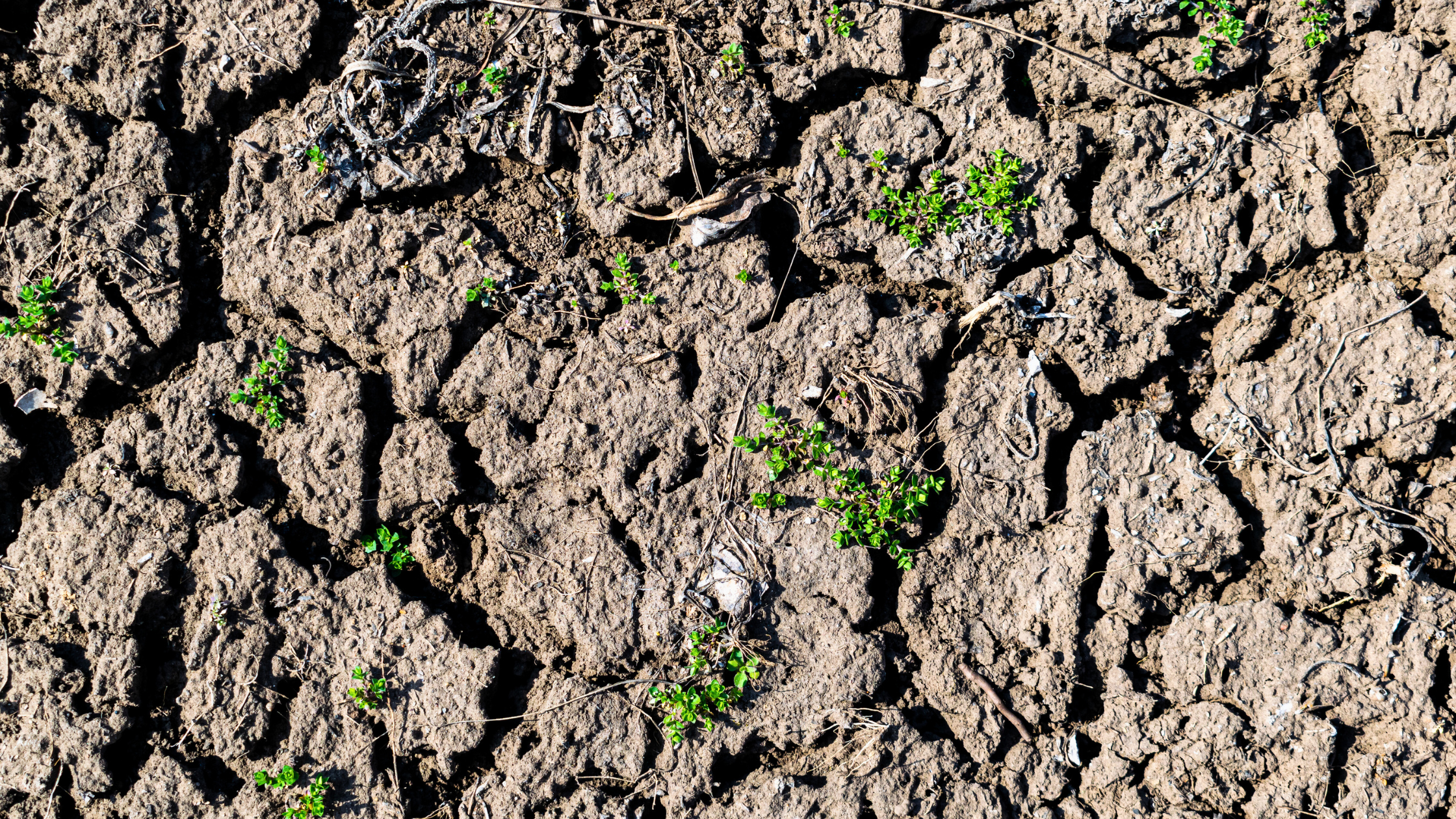
Soil erosion is a significant concern for property owners with sloped yards or uneven terrain. Without intervention, soil can easily slide downhill, leading to slope failures and loss of usable land.
Retaining walls act as a barrier, holding soil in place and preventing it from moving. This not only protects the landscape but also maintains the structural integrity of the surrounding soil. Concrete retaining walls are particularly effective at preventing soil erosion and providing long-lasting support.
Adding Retaining Walls for Aesthetic and Functional Benefits
Retaining walls improve the look and usefulness of your outdoor area, making them a great addition to your space. Landscaping elements such as retaining walls can enhance the overall design and functionality of your garden. These walls help utilize sloped land for activities such as entertaining, gardening, or relaxing. They create flat, functional spaces for these purposes.
Having a stone wall in your garden can make it more enjoyable for different activities. It can also be a focal point, adding visual appeal and blending in with the natural environment.
These walls create flat areas on sloped land. This helps you use your outdoor space for activities. You can entertain guests, garden, or simply relax. Raised planters and other elements can enhance the look and usefulness of retaining walls in the design.
The Role of Retaining Walls in Water Management
Managing water flow is another critical function of retaining walls. On steep slopes, water runoff can cause significant erosion and damage.
Installing a retaining wall usually involves adding drainage systems to move water away, preventing buildup and ensuring proper drainage. This is essential for maintaining the wall’s structural integrity and preventing slope failures. Proper drainage also helps prevent soil saturation, which can weaken the wall’s foundation and lead to collapse.
The Importance of Material Selection in Retaining Wall Construction
Choosing the right material for your retaining wall is crucial to ensure its durability, structural soundness, and visual appeal. Interlocking concrete blocks are a popular choice due to their durability and versatility in design.
Interlocking concrete blocks are particularly effective for creating curved walls or walls with varying heights. Natural stone offers a timeless, rustic look that enhances the landscape’s natural beauty.
Poured concrete is another option that provides a sleek, modern appearance while offering strong support. No matter what it’s made of, the most important thing is for the retaining wall to support the soil and make outdoor space usable.
Designing Retaining Walls for Longevity
Creating a retaining wall needs careful planning to ensure its structural integrity, making it strong and durable for a long time. The design must consider factors such as the height of the wall, the type of soil, the weight of the soil behind the wall, and the structural integrity of the materials used.
Properly designed retaining walls will require minimal maintenance and remain structurally sound even under heavy loads. This is especially important in areas with severe slopes, where the pressure on the wall can be significant. Build the wall with a strong base and good drainage to make it last a long time in your garden.
Why is a Retaining Wall Essential for Slope Management?
Managing sloped or uneven terrain, also known as slope management, is one of the biggest challenges in landscape design. Without retaining walls, sloped land can be difficult to use and prone to soil erosion and water runoff.
Retaining walls make sloped land flat, allowing for the creation of useful areas like patios, gardens, and walkways. They also provide structural support to prevent soil movement and slope failures.
Property owners can use retaining walls to control steep slopes and uneven terrain in their outdoor space. This allows them to make the most of their property.
Retaining walls help to create more usable space in areas that would otherwise be difficult to navigate. By using retaining walls, property owners can optimize their outdoor space for various activities.
Retaining Walls as a Long-Term Investment
Installing a retaining wall is a long-term investment that can pay off in many ways. Retaining walls make your property look better and increase its value by adding more usable land. A good retaining wall can last many years, increasing property value and lowering maintenance costs. Retaining walls help prevent soil erosion and water damage, saving property owners money on repairs and landscaping.
Common Mistakes to Avoid in Retaining Wall Projects
Retaining wall projects require careful planning and execution to avoid common pitfalls. A common mistake is not having proper drainage, which can lead to structural failure. This can cause water to build up behind the wall. Eventually, this may lead to the wall failing.
Another mistake is not constructing a solid foundation, which can cause the wall to shift or collapse over time. Using the wrong materials for the wall or for the soil type can also compromise its structural integrity. To ensure your retaining wall is effective and durable, hire skilled professionals. They know how to build retaining walls correctly.
The Benefits of Professional Retaining Wall Installation
Some homeowners may want to build a retaining wall themselves, but professional installation is a better option. Experts can build a strong and attractive retaining wall.
They have the skills and know-how to create a wall that looks good and lasts. They know how to choose the right soil, drainage, and materials to build a strong and durable wall. Skilled professionals can manage permits and inspections to make sure the retaining wall meets local building rules and regulations.
Maintenance Tips for Long-Lasting Retaining Walls
To ensure that your retaining wall remains structurally sound and visually appealing, regular maintenance is essential. This includes inspecting the wall for any signs of wear or damage, such as cracks or bulges, and addressing these issues promptly. Cleaning out drainage systems to prevent water buildup is also important. By taking care of them, retaining walls can keep your property stable, stop soil erosion, and make it look better for a long time.
Retaining Walls for Commercial Properties
Retaining walls are important for both homes and commercial properties, especially on sloped or uneven land. In commercial settings, they help prevent erosion and provide stability.
In commercial settings, retaining walls can create flat, functional spaces for parking lots, walkways, and outdoor seating areas. They also enhance the property’s visual appeal, making it more attractive to customers and clients.
Businesses can benefit from installing a retaining wall. The wall adds both function and beauty to the property. This makes it a wise investment.
The Role of Retaining Walls in Outdoor Living Spaces
The Indispensable Role of Retaining Walls in Landscaping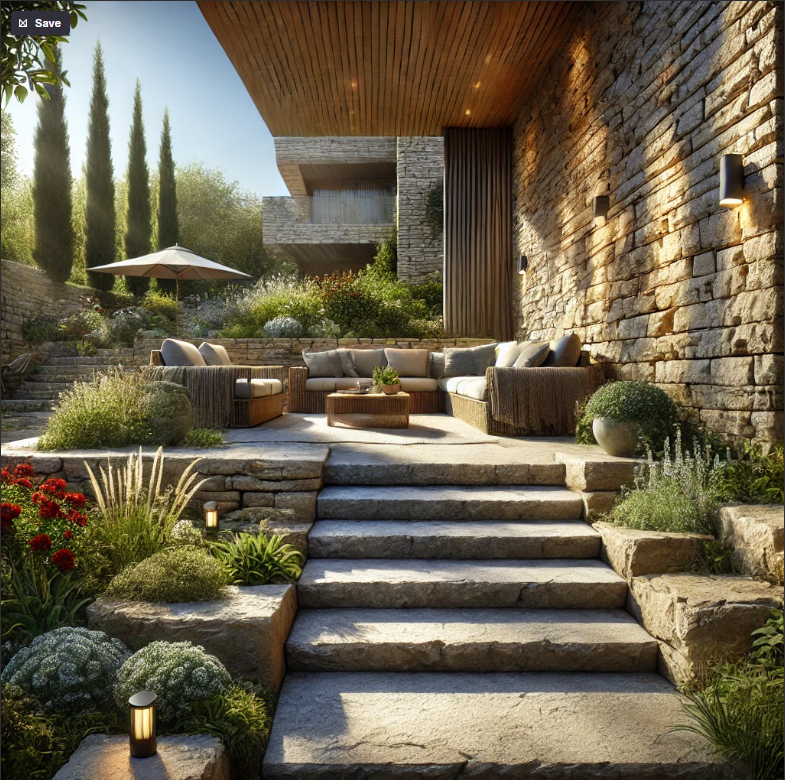
Retaining walls can transform sloped yards into beautiful, functional outdoor living spaces. Retaining walls create flat spaces for building patios, outdoor kitchens, and seating areas for entertaining or relaxing outdoors. These walls help support the structure and keep your outdoor spaces stable and usable. Retaining walls can help you create a cozy garden retreat or a spacious entertaining area to achieve your vision.
Retaining Walls as a Focal Point in Landscape Design
A good retaining wall can serve as a focal point in your landscape design. They are an important feature that adds beauty and interest to the overall design. Whether you choose natural stone for a rustic look or poured concrete for a modern aesthetic, the materials and design of your retaining wall can complement your home and garden. Incorporating features such as built-in seating, planters, or lighting can add to the wall’s functionality and aesthetic appeal, making it a standout feature in your landscape.
The Cost of Building Retaining Walls
The cost of building a retaining wall varies depending on factors such as the material used, the size and height of the wall, and the complexity of the design. While natural stone and poured concrete are typically more expensive options, they offer long-lasting durability and a timeless look that can enhance the property’s value.
Concrete blocks and interlocking blocks are more affordable and cost-effective choices that still provide strong support and flexibility in design. Regardless of the material, the investment in a well-constructed retaining wall is one that can increase your property’s value and reduce long-term maintenance costs.
Choosing the Right Contractor for Your Retaining Wall Project
Selecting the right experienced contractor for your retaining wall project is crucial to its success. It’s important to choose a contractor with experience in retaining wall installation and a portfolio of completed projects. A knowledgeable contractor will understand the importance of proper drainage, material selection, and structural support, and will ensure that the wall is built to last.
Additionally, a good contractor will be familiar with local building codes and regulations, ensuring that your retaining wall is constructed properly and meets all legal requirements.
The Essential Role of Retaining Walls in Landscaping
Landscape transformation is a key benefit of retaining walls, offering both functional and aesthetic advantages. From preventing soil erosion to creating usable outdoor space, these structures provide a range of advantages that make them indispensable in modern landscaping. Whether you’re looking to increase your property value, improve its curb appeal, or protect it from erosion and water damage, retaining walls are a valuable investment. With the right design, materials, and professional installation, a retaining wall can transform your landscape into a beautiful, functional, and sustainable outdoor space.
The Indispensable Role of Retaining Walls in Landscaping
hy is a Retaining Wall Essential for Your Landscape?
Retaining walls are critical components in both residential and commercial landscaping. These structures not only look good but also play a vital role in landscape design. They help manage soil, prevent erosion, and create usable areas on sloped or uneven land.
Adding retaining walls to your yard design can improve your outdoor spaces. It also makes your property more stable and sustainable. This article discusses the benefits of retaining walls, their role in landscaping, and their importance for property owners.
Understanding the Basics: What is a Retaining Wall?
A retaining wall is a structure designed to hold soil in place, particularly on sloped land where soil might otherwise move due to gravity. These walls help stop soil erosion, control water flow, and create usable areas on steep land.
Retaining walls can be made from various materials, including concrete blocks, natural stone, interlocking concrete blocks, and poured concrete. Each material offers unique benefits in terms of durability, aesthetic appeal, and structural support. When constructed properly, a retaining wall serves to transform unusable terrain into valuable, functional space.
Why is a Retaining Wall Essential for Your Property?
Retaining walls are essential for stabilizing slopes and preventing soil erosion. Slope stabilization is a critical function of retaining walls, ensuring the safety and integrity of your property. They act as barriers, holding soil in place and preventing it from washing away during heavy rains. A stone retaining wall can enhance the visual appeal of outdoor spaces, contributing to curb appeal and creating unique garden areas. This erosion control is especially important in sloped areas where soil movement can cause significant damage.
Retaining walls make flat areas on steep slopes for gardens, patios, or extra space. Retaining walls have a dual function. They serve a purpose and also enhance the look of your property. This can add value to your property and improve its appearance
Preventing Soil Erosion with Retaining Walls

Soil erosion is a significant concern for property owners with sloped yards or uneven terrain. Without intervention, soil can easily slide downhill, leading to slope failures and loss of usable land.
Retaining walls act as a barrier, holding soil in place and preventing it from moving. This not only protects the landscape but also maintains the structural integrity of the surrounding soil. Concrete retaining walls are particularly effective at preventing soil erosion and providing long-lasting support.
Adding Retaining Walls for Aesthetic and Functional Benefits
Retaining walls improve the look and usefulness of your outdoor area, making them a great addition to your space. Landscaping elements such as retaining walls can enhance the overall design and functionality of your garden. These walls help utilize sloped land for activities such as entertaining, gardening, or relaxing. They create flat, functional spaces for these purposes.
Having a stone wall in your garden can make it more enjoyable for different activities. It can also be a focal point, adding visual appeal and blending in with the natural environment.
These walls create flat areas on sloped land. This helps you use your outdoor space for activities. You can entertain guests, garden, or simply relax. Raised planters and other elements can enhance the look and usefulness of retaining walls in the design.
The Role of Retaining Walls in Water Management
Managing water flow is another critical function of retaining walls. On steep slopes, water runoff can cause significant erosion and damage.
Installing a retaining wall usually involves adding drainage systems to move water away, preventing buildup and ensuring proper drainage. This is essential for maintaining the wall’s structural integrity and preventing slope failures. Proper drainage also helps prevent soil saturation, which can weaken the wall’s foundation and lead to collapse.
The Importance of Material Selection in Retaining Wall Construction
Choosing the right material for your retaining wall is crucial to ensure its durability, structural soundness, and visual appeal. Interlocking concrete blocks are a popular choice due to their durability and versatility in design.
Interlocking concrete blocks are particularly effective for creating curved walls or walls with varying heights. Natural stone offers a timeless, rustic look that enhances the landscape’s natural beauty.
Poured concrete is another option that provides a sleek, modern appearance while offering strong support. No matter what it’s made of, the most important thing is for the retaining wall to support the soil and make outdoor space usable.
Designing Retaining Walls for Longevity
Creating a retaining wall needs careful planning to ensure its structural integrity, making it strong and durable for a long time. The design must consider factors such as the height of the wall, the type of soil, the weight of the soil behind the wall, and the structural integrity of the materials used.
Properly designed retaining walls will require minimal maintenance and remain structurally sound even under heavy loads. This is especially important in areas with severe slopes, where the pressure on the wall can be significant. Build the wall with a strong base and good drainage to make it last a long time in your garden.
Why is a Retaining Wall Essential for Slope Management?
Managing sloped or uneven terrain, also known as slope management, is one of the biggest challenges in landscape design. Without retaining walls, sloped land can be difficult to use and prone to soil erosion and water runoff.
Retaining walls make sloped land flat, allowing for the creation of useful areas like patios, gardens, and walkways. They also provide structural support to prevent soil movement and slope failures.
Property owners can use retaining walls to control steep slopes and uneven terrain in their outdoor space. This allows them to make the most of their property.
Retaining walls help to create more usable space in areas that would otherwise be difficult to navigate. By using retaining walls, property owners can optimize their outdoor space for various activities.
Retaining Walls as a Long-Term Investment
Installing a retaining wall is a long-term investment that can pay off in many ways. Retaining walls make your property look better and increase its value by adding more usable land. A good retaining wall can last many years, increasing property value and lowering maintenance costs. Retaining walls help prevent soil erosion and water damage, saving property owners money on repairs and landscaping.
Common Mistakes to Avoid in Retaining Wall Projects
Retaining wall projects require careful planning and execution to avoid common pitfalls. A common mistake is not having proper drainage, which can lead to structural failure. This can cause water to build up behind the wall. Eventually, this may lead to the wall failing.
Another mistake is not constructing a solid foundation, which can cause the wall to shift or collapse over time. Using the wrong materials for the wall or for the soil type can also compromise its structural integrity. To ensure your retaining wall is effective and durable, hire skilled professionals. They know how to build retaining walls correctly.
The Benefits of Professional Retaining Wall Installation
Some homeowners may want to build a retaining wall themselves, but professional installation is a better option. Experts can build a strong and attractive retaining wall.
They have the skills and know-how to create a wall that looks good and lasts. They know how to choose the right soil, drainage, and materials to build a strong and durable wall. Skilled professionals can manage permits and inspections to make sure the retaining wall meets local building rules and regulations.
Maintenance Tips for Long-Lasting Retaining Walls
To ensure that your retaining wall remains structurally sound and visually appealing, regular maintenance is essential. This includes inspecting the wall for any signs of wear or damage, such as cracks or bulges, and addressing these issues promptly. Cleaning out drainage systems to prevent water buildup is also important. By taking care of them, retaining walls can keep your property stable, stop soil erosion, and make it look better for a long time.
Retaining Walls for Commercial Properties
Retaining walls are important for both homes and commercial properties, especially on sloped or uneven land. In commercial settings, they help prevent erosion and provide stability.
In commercial settings, retaining walls can create flat, functional spaces for parking lots, walkways, and outdoor seating areas. They also enhance the property’s visual appeal, making it more attractive to customers and clients.
Businesses can benefit from installing a retaining wall. The wall adds both function and beauty to the property. This makes it a wise investment.
The Role of Retaining Walls in Outdoor Living Spaces

Retaining walls can transform sloped yards into beautiful, functional outdoor living spaces. Retaining walls create flat spaces for building patios, outdoor kitchens, and seating areas for entertaining or relaxing outdoors. These walls help support the structure and keep your outdoor spaces stable and usable. Retaining walls can help you create a cozy garden retreat or a spacious entertaining area to achieve your vision.
Retaining Walls as a Focal Point in Landscape Design
A good retaining wall can serve as a focal point in your landscape design. They are an important feature that adds beauty and interest to the overall design. Whether you choose natural stone for a rustic look or poured concrete for a modern aesthetic, the materials and design of your retaining wall can complement your home and garden. Incorporating features such as built-in seating, planters, or lighting can add to the wall’s functionality and aesthetic appeal, making it a standout feature in your landscape.
The Cost of Building Retaining Walls
The cost of building a retaining wall varies depending on factors such as the material used, the size and height of the wall, and the complexity of the design. While natural stone and poured concrete are typically more expensive options, they offer long-lasting durability and a timeless look that can enhance the property’s value.
Concrete blocks and interlocking blocks are more affordable and cost-effective choices that still provide strong support and flexibility in design. Regardless of the material, the investment in a well-constructed retaining wall is one that can increase your property’s value and reduce long-term maintenance costs.
Choosing the Right Contractor for Your Retaining Wall Project
Selecting the right experienced contractor for your retaining wall project is crucial to its success. It’s important to choose a contractor with experience in retaining wall installation and a portfolio of completed projects. A knowledgeable contractor will understand the importance of proper drainage, material selection, and structural support, and will ensure that the wall is built to last.
Additionally, a good contractor will be familiar with local building codes and regulations, ensuring that your retaining wall is constructed properly and meets all legal requirements.
The Essential Role of Retaining Walls in Landscaping
Landscape transformation is a key benefit of retaining walls, offering both functional and aesthetic advantages. From preventing soil erosion to creating usable outdoor space, these structures provide a range of advantages that make them indispensable in modern landscaping. Whether you’re looking to increase your property value, improve its curb appeal, or protect it from erosion and water damage, retaining walls are a valuable investment. With the right design, materials, and professional installation, a retaining wall can transform your landscape into a beautiful, functional, and sustainable outdoor space.









